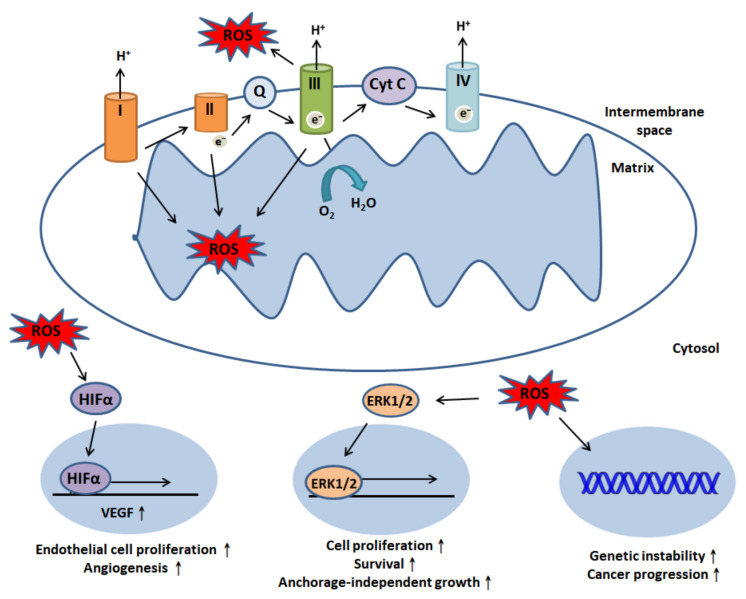Figure 1.
Reactive oxygen species (ROS) generation and modulation of cell signaling events. The four mitochondrial complexes embedded in the mitochondrial inner membrane—complexes I, II, III and IV—are responsible for electron transfer. ROS can be generated by complexes I, II and III. ROS produced by complexes I and II are primarily located in the matrix, while complex III can generate O2• in both the intermembrane space and matrix. Nevertheless, intermembrane ROS translocate to the cytosol and cellular trigger events; ROS can stabilize HIFα under hypoxic conditions, and this stabilization subsequently induces VEGF expression to promote endothelial cell proliferation and angiogenesis. ROS can also initiate the ERK signaling pathway, promoting cell proliferation and survival and anchorage-independent growth. Moreover, they can lead to genomic instability and induce cancer progression.

